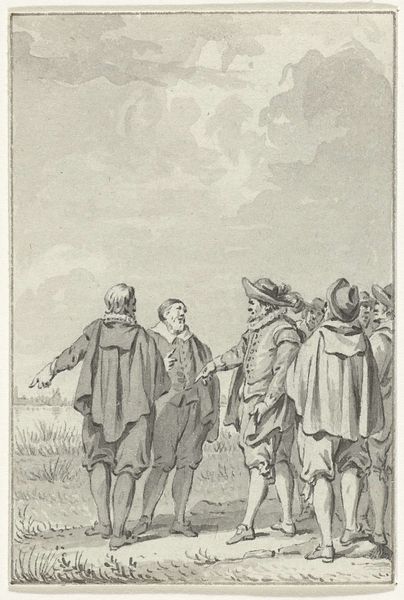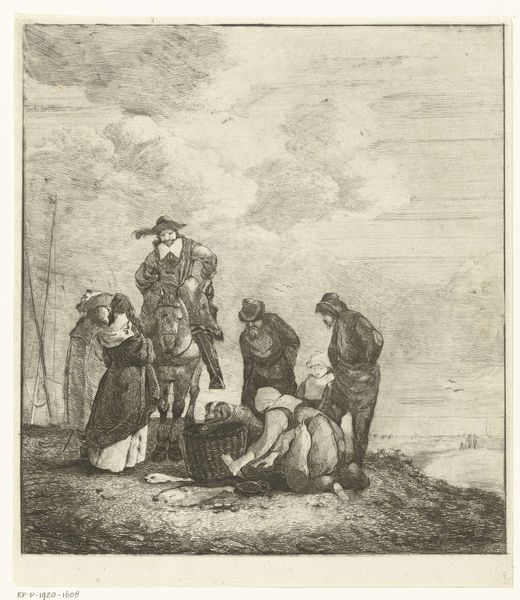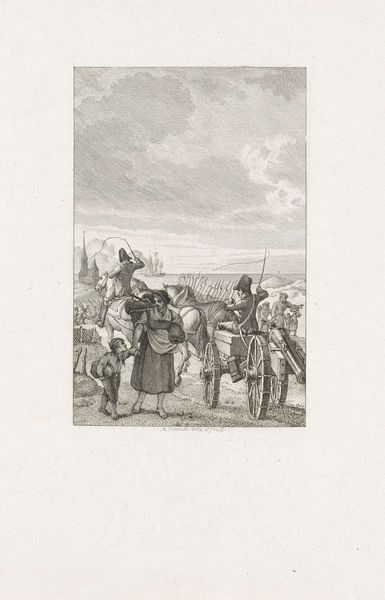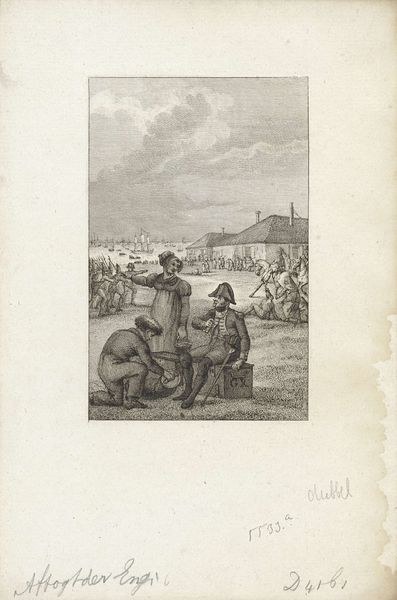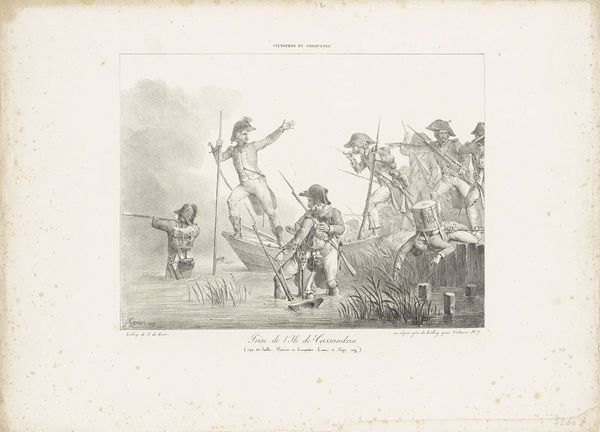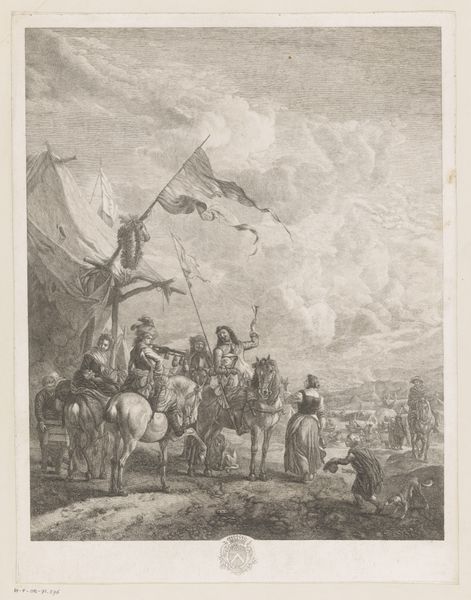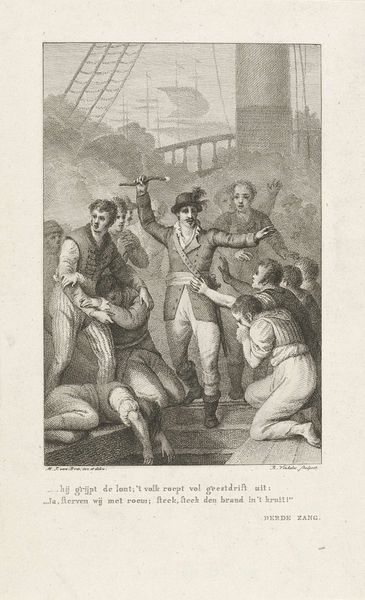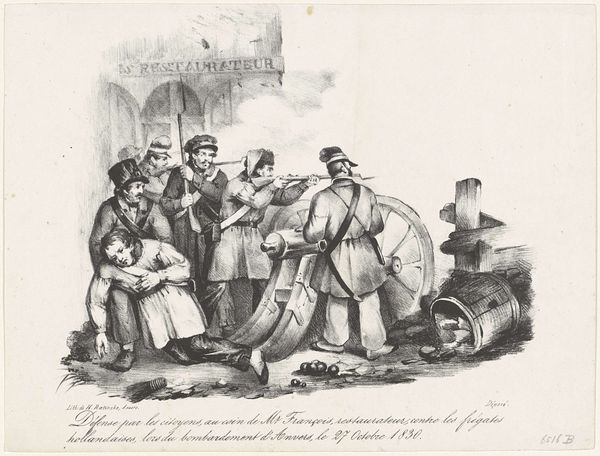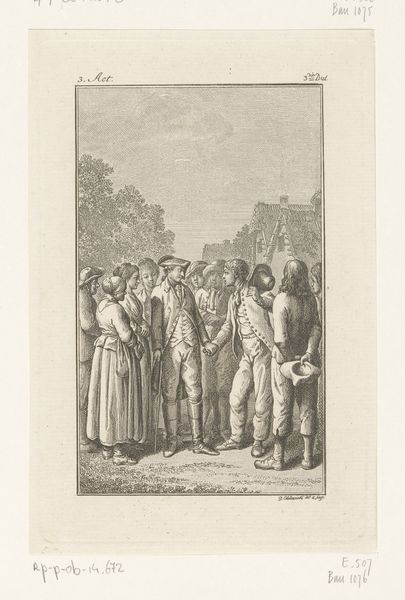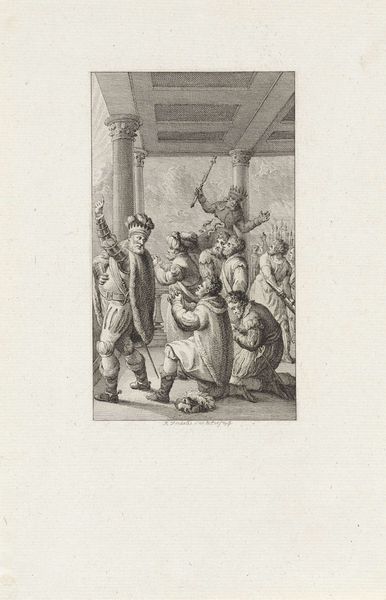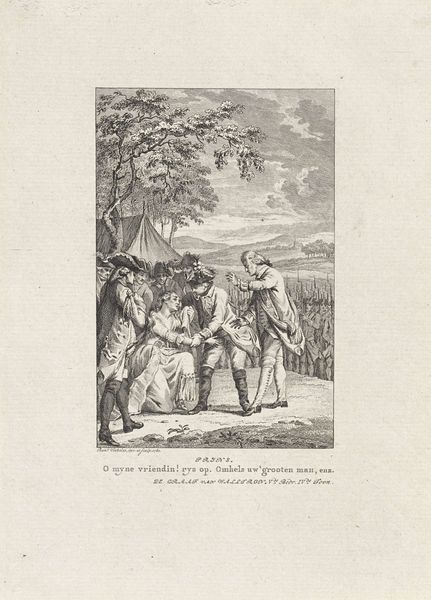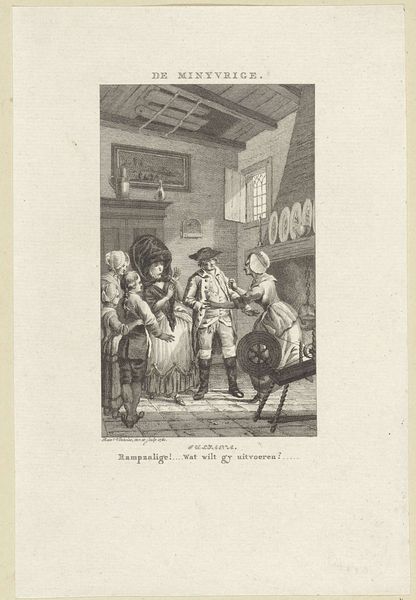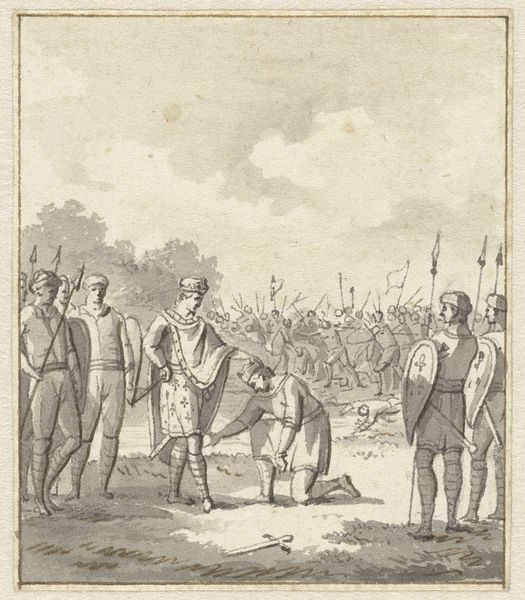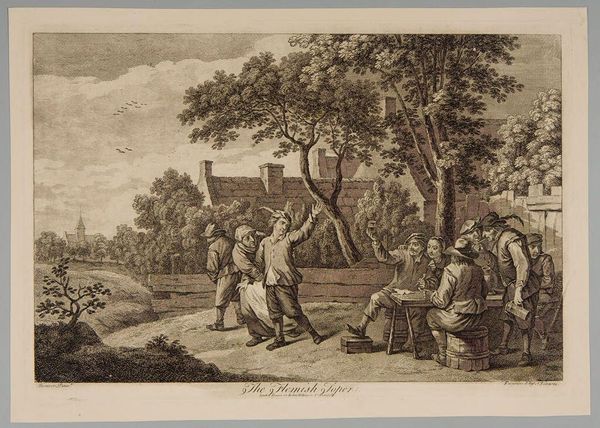
Dimensions: height 167 mm, width 116 mm, height 84 mm, width 66 mm
Copyright: Rijks Museum: Open Domain
Curator: This etching, made by Jan Baptist Tetar van Elven, offers us a glimpse of "Vissers op het strand van Scheveningen"—"Fishermen on the beach of Scheveningen." It was created sometime between 1815 and 1889, and you can almost smell the sea air, can’t you? Editor: It’s quite monochromatic, isn’t it? Instantly giving it a nostalgic air. I see a cluster of figures dominating the foreground, but their expressions are curiously neutral, or perhaps even somber, despite the coastal setting. What's your read on their relationship to the sea, beyond the obvious profession? Curator: I think there's a palpable stoicism there, wouldn’t you agree? Van Elven manages to capture that sense of resilience, the daily negotiation with nature. Look at the way he renders the textures—the rough ropes, the worn fabric, the almost glassy sheen of the sea. The contrast adds so much, the almost stoic resolve of everyday life. Editor: Precisely! The interplay between land and sea isn’t just pictorial, it's a representation of labor and the gendered divisions inherent to it. The women and children seem positioned in support roles, while the men, presumably, are directly engaged with the more visible act of fishing. The Romantic ideal of nature here bumps against the realities of a patriarchal society structured by work. Curator: That's a fascinating point. I think he’s romanticizing that reality. He almost imbues the scene with a sort of quiet heroism. I imagine these characters have many compelling and dramatic untold stories. The sea has that effect. It suggests epic possibilities. Editor: Perhaps the unstated narrative is in the details. Consider their clothing; are these markers of a specific cultural identity? And how does the inclusion of these figures shape the overall interpretation of landscape as both a resource and a cultural space? Whose stories are considered “historical”, and whose are marginalized? It all ties to access and power. Curator: Van Elven gives us an invitation, a doorway to their world that is not about answers, necessarily, but instead focuses on deeper connections and meanings that might linger below the surface. The longer you gaze into it, the richer it becomes, a dance of labor and legacy upon the strand of time itself. Editor: Indeed. Gazing into this piece, one begins to meditate on the daily grind of survival, of enduring across the waves of time, whose perspective of whose experience and place. I wonder about the waves of future stories to tell beyond a monochromatic print of its time.
Comments
No comments
Be the first to comment and join the conversation on the ultimate creative platform.
